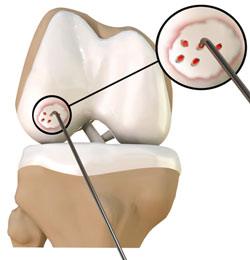Dr. Rice has joined Beacon Orthopedics and Sports Medicine
Congratulations Dr. Rice: 2025 Cincinnati Magazine Top Doctor
Chondroplasty

Articular or hyaline cartilage is the tissue lining the surface of two bones in a joint. It helps the bones to move smoothly against each other and can withstand the pressure of activities such as running and jumping. Articular cartilage does not have a direct blood supply so it has less capability of repairing by itself and can lead to degeneration of the articular surface (osteoarthritis). Chondroplasty refers to the surgical repair of torn or damaged cartilage.
It is usually performed as day-case surgery through arthroscopy. An arthroscopic procedure involves the insertion of a telescope through a small incision, allowing your surgeon to clearly view the operating site on a monitor without having to make a large opening. Along with the arthroscope, other surgical instruments are inserted to repair the damage.
A simple smoothing chondroplasty involves the removal of loose fragments of the articular tissue and smoothing of roughened edges of the cartilage with a mechanized shaver.
An abrasion chondroplasty is performed when the articular cartilage wears away, exposing the underlying bone. In this procedure, a rotary burr is used to scrape off the bone tissue from the surface of the joint. This scraping action creates a bleeding surface and later forms scar tissue that replaces the original articular cartilage. This procedure is usually used when the defect is small. Following surgery, crutches are used for a period of six weeks to allow proper healing.


